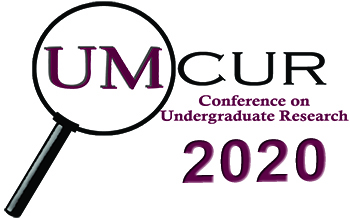Project Type
Presentation
Faculty Mentor’s Full Name
Jason Begay
Faculty Mentor’s Department
Journalism
Abstract / Artist's Statement
Historically, indigenous people living in the U.S. were not legally allowed to use or practice traditional healing methods that they had been using for many years before North America was settled by Europeans and many years before the United States government was formed. The Indian Health Service clinics and hospitals also did not historically offer traditional health services. Before the 1978 American Indian Religious Freedom Act, the federal government could convict practitioners of traditional healing. Today, health centers like the Southcentral Foundation in Alaska and the Seattle Indian Health Board have clinics specifically for traditional health services. The Missoula Urban Indian Health Center has also been adding traditional health services and education. In Montana, out of the 8 reservations in Montana, 6 reservations have a hospital or clinic ran by IHS, and two reservations compacted to run their own clinics. As part of the JRNL 411 Reporting Native News project, I will be looking specifically at Fort Belknap under the scope of “science and its interaction with tribal culture.” I want to look at traditional health under the lens of science and culture. Traditional health has many aspects. Currently, at the Fort Belknap reservation, the demonstration farm that is part of the Aniiih Nakoda College grows many different plants including some that can be used for traditional medicine, and the Fort Belknap Unit Hospital run by IHS is hiring a traditional healer and counselor. During my research, I will speak to members of the Fort Belknap reservation, people at the Fort Belknap Unit Hospital and other traditional health experts around the country. My research and feature story that I produce will show the accessibility, purpose and result of traditional health options on the Fort Belknap reservation.
Category
Humanities
Traditional Health and Science at Fort Belknap
Historically, indigenous people living in the U.S. were not legally allowed to use or practice traditional healing methods that they had been using for many years before North America was settled by Europeans and many years before the United States government was formed. The Indian Health Service clinics and hospitals also did not historically offer traditional health services. Before the 1978 American Indian Religious Freedom Act, the federal government could convict practitioners of traditional healing. Today, health centers like the Southcentral Foundation in Alaska and the Seattle Indian Health Board have clinics specifically for traditional health services. The Missoula Urban Indian Health Center has also been adding traditional health services and education. In Montana, out of the 8 reservations in Montana, 6 reservations have a hospital or clinic ran by IHS, and two reservations compacted to run their own clinics. As part of the JRNL 411 Reporting Native News project, I will be looking specifically at Fort Belknap under the scope of “science and its interaction with tribal culture.” I want to look at traditional health under the lens of science and culture. Traditional health has many aspects. Currently, at the Fort Belknap reservation, the demonstration farm that is part of the Aniiih Nakoda College grows many different plants including some that can be used for traditional medicine, and the Fort Belknap Unit Hospital run by IHS is hiring a traditional healer and counselor. During my research, I will speak to members of the Fort Belknap reservation, people at the Fort Belknap Unit Hospital and other traditional health experts around the country. My research and feature story that I produce will show the accessibility, purpose and result of traditional health options on the Fort Belknap reservation.
